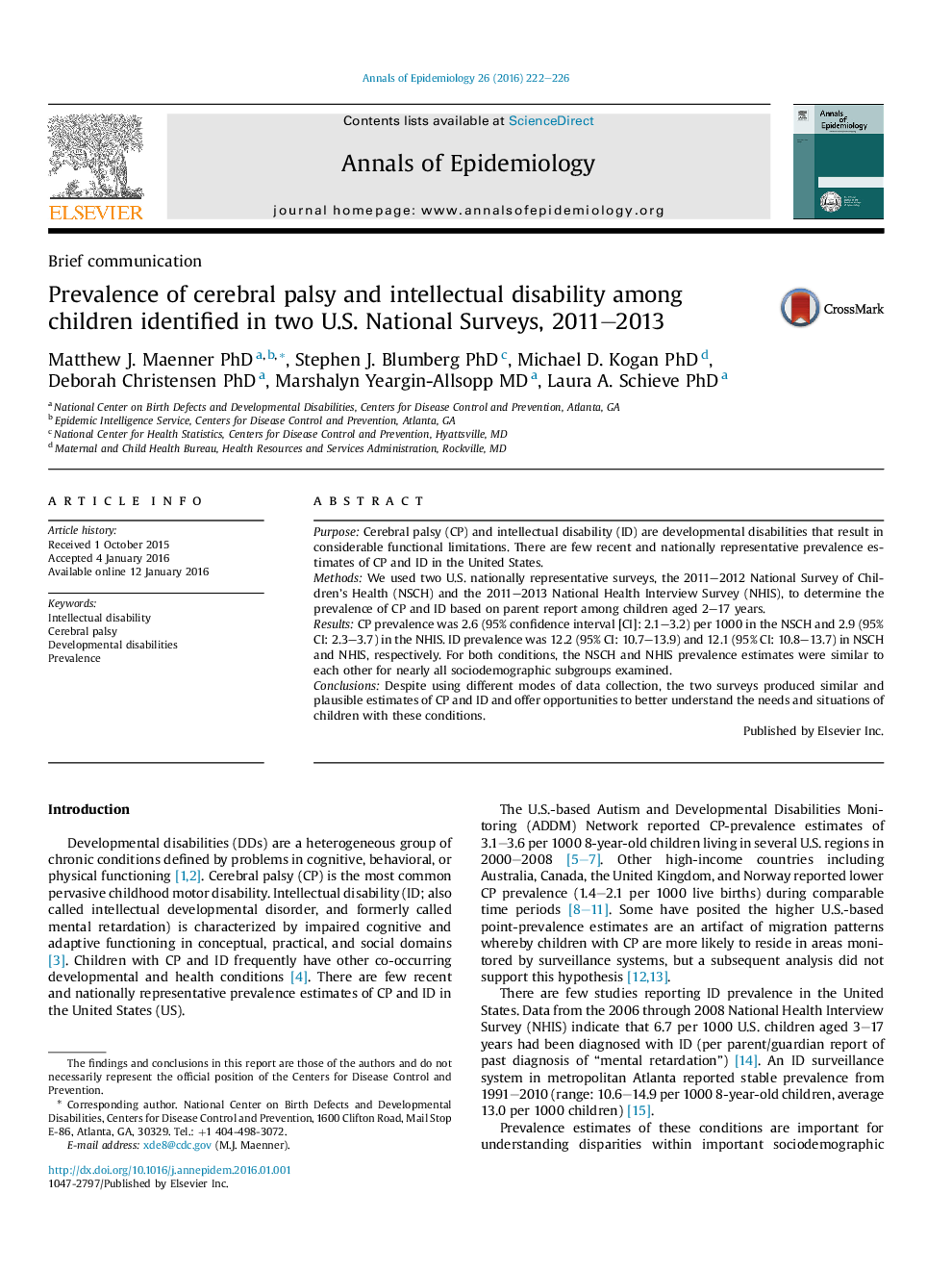| Article ID | Journal | Published Year | Pages | File Type |
|---|---|---|---|---|
| 3443659 | Annals of Epidemiology | 2016 | 5 Pages |
PurposeCerebral palsy (CP) and intellectual disability (ID) are developmental disabilities that result in considerable functional limitations. There are few recent and nationally representative prevalence estimates of CP and ID in the United States.MethodsWe used two U.S. nationally representative surveys, the 2011–2012 National Survey of Children's Health (NSCH) and the 2011–2013 National Health Interview Survey (NHIS), to determine the prevalence of CP and ID based on parent report among children aged 2–17 years.ResultsCP prevalence was 2.6 (95% confidence interval [CI]: 2.1–3.2) per 1000 in the NSCH and 2.9 (95% CI: 2.3–3.7) in the NHIS. ID prevalence was 12.2 (95% CI: 10.7–13.9) and 12.1 (95% CI: 10.8–13.7) in NSCH and NHIS, respectively. For both conditions, the NSCH and NHIS prevalence estimates were similar to each other for nearly all sociodemographic subgroups examined.ConclusionsDespite using different modes of data collection, the two surveys produced similar and plausible estimates of CP and ID and offer opportunities to better understand the needs and situations of children with these conditions.
